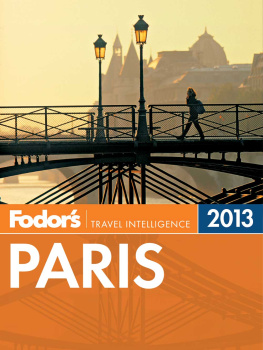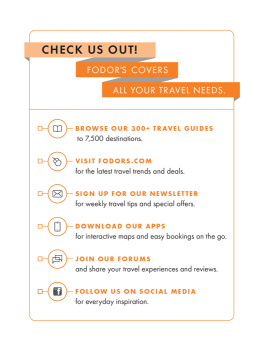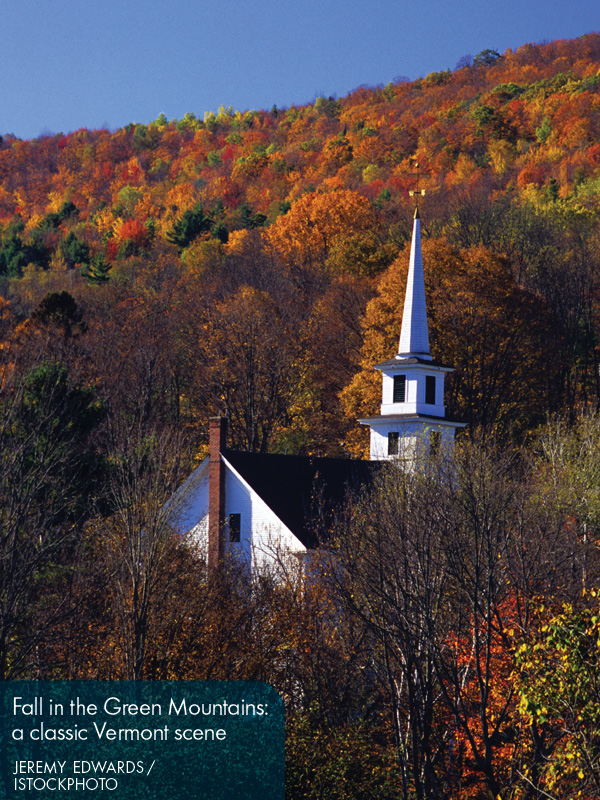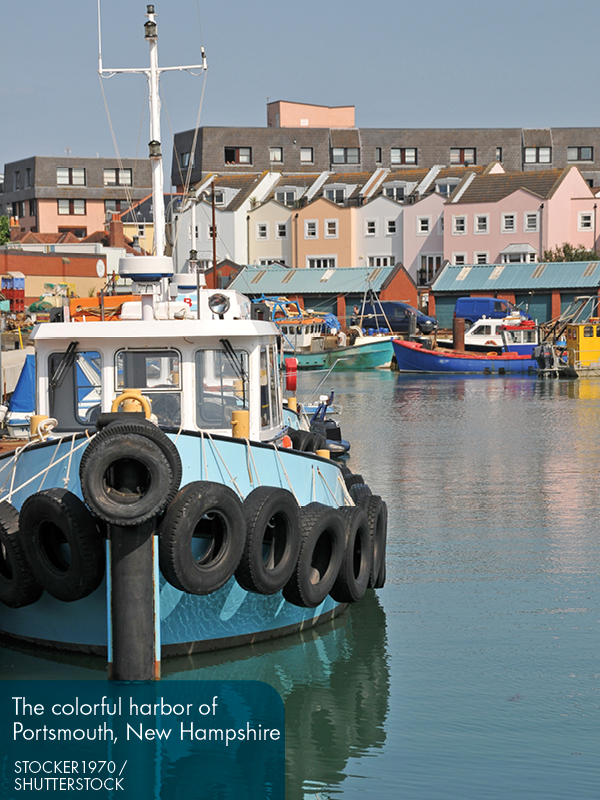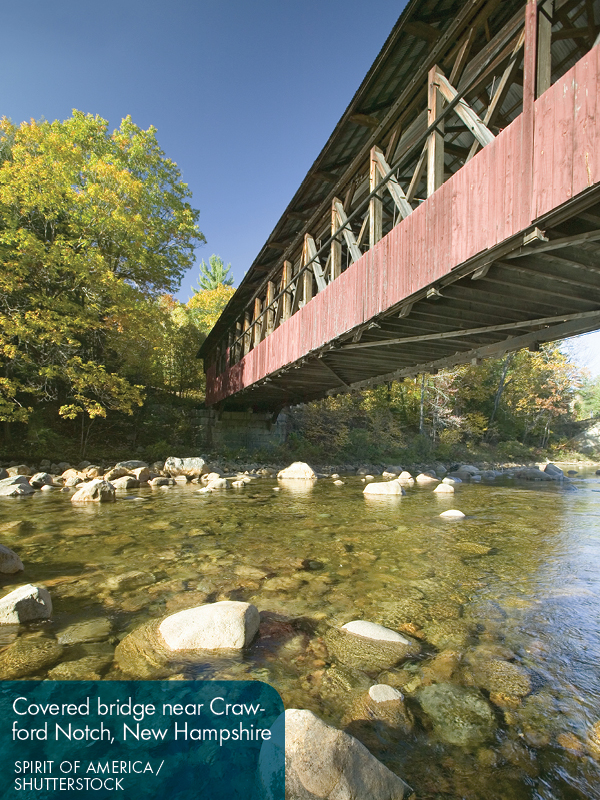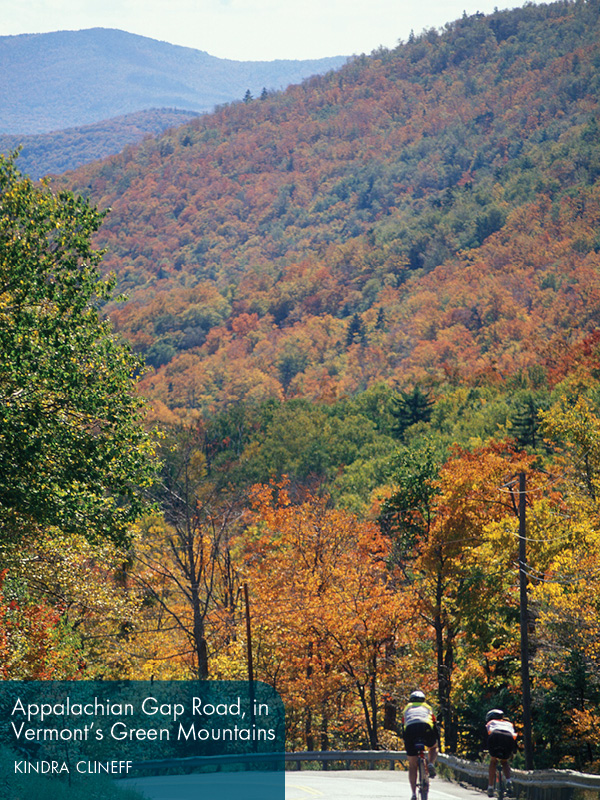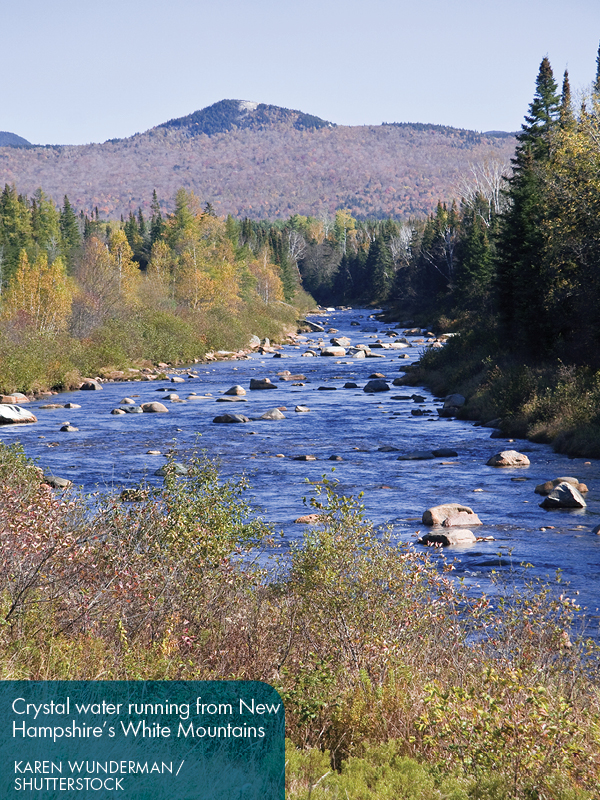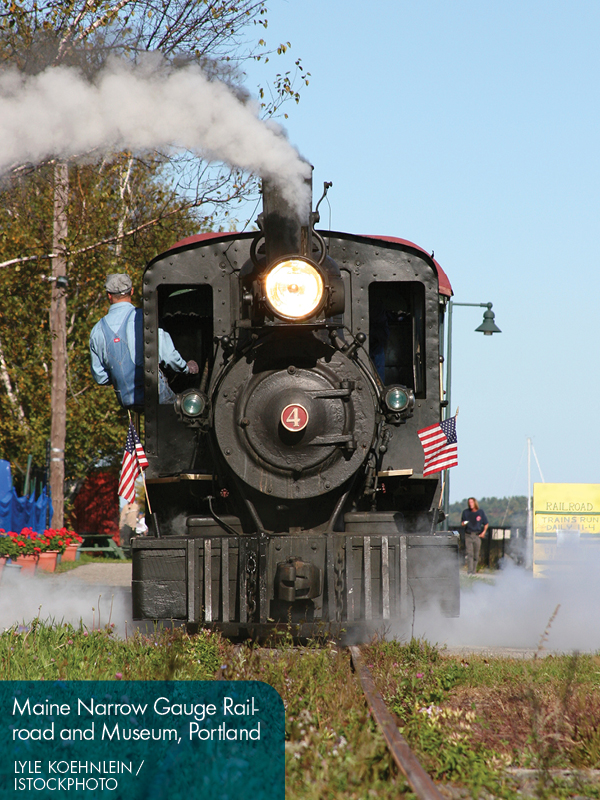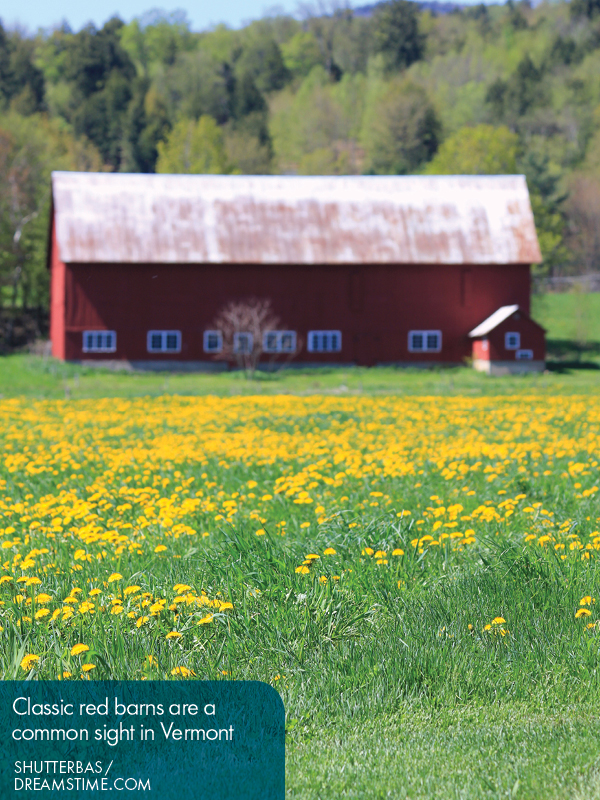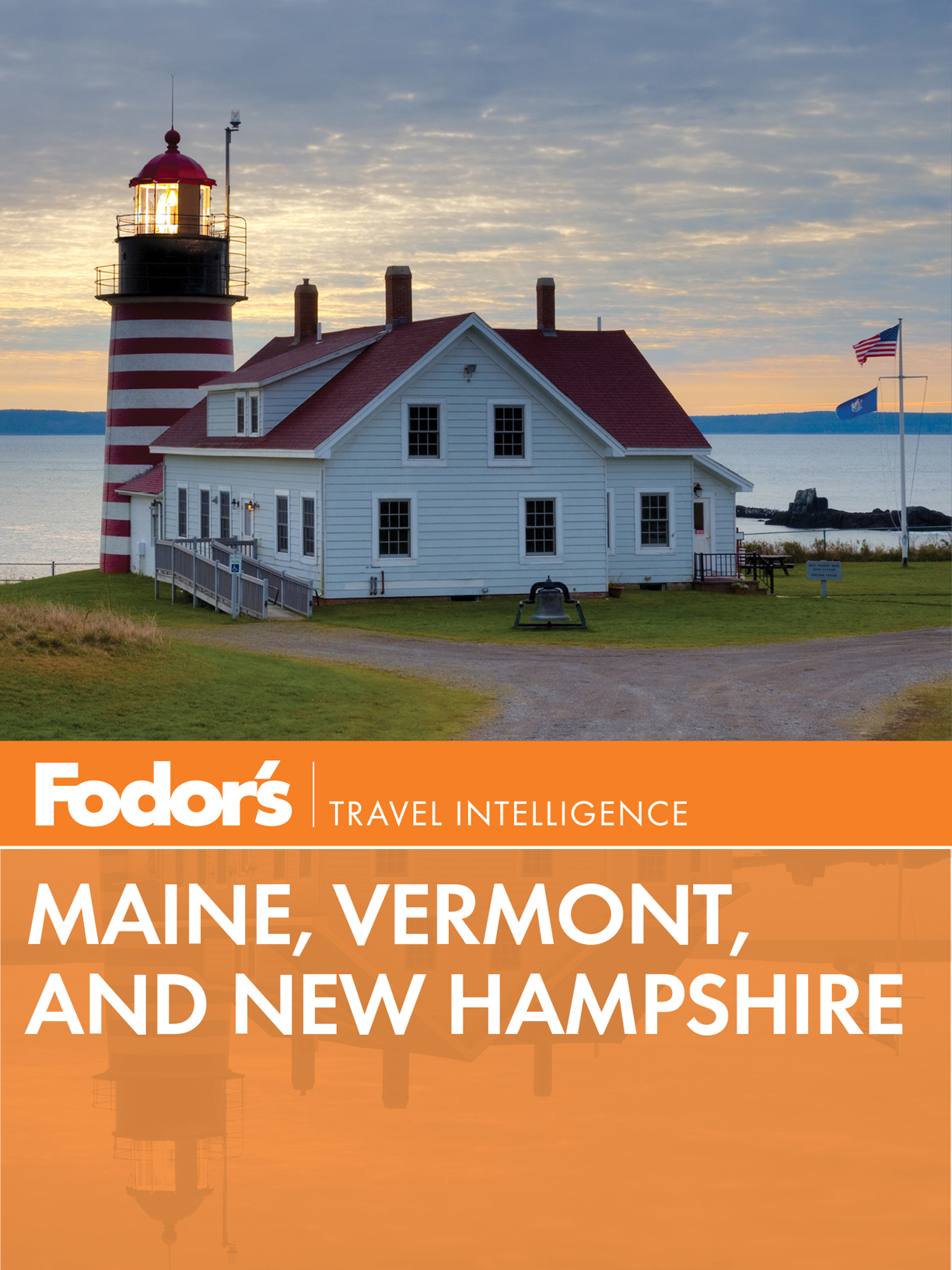

Vermont
New Hampshire
Inland Maine
Maine Coast
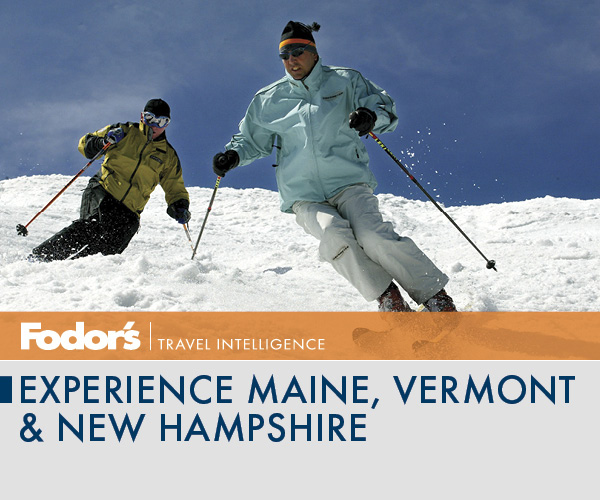
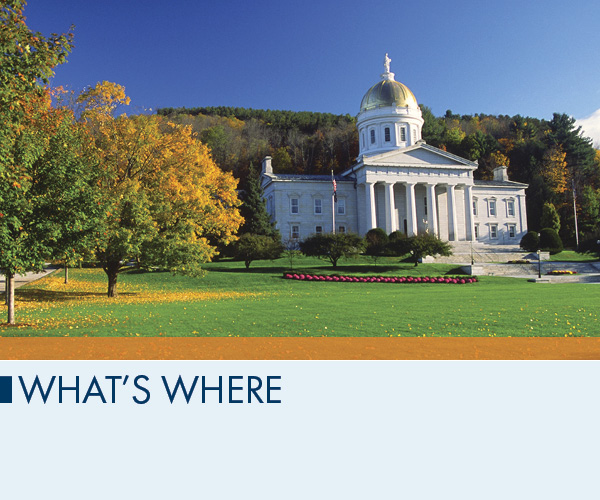
Vermont. Southern Vermont has farms, freshly starched New England towns, quiet back roads, bustling ski resorts, and strip-mall sprawl. Central Vermonts trademarks include famed marble quarries, and large dairy herds and pastures that create the quilted patchwork of the Champlain Valley. The heart of the area is the wilderness of the Green Mountain National Forest. Both the states largest city (Burlington) and the nations smallest state capital (Montpelier) are in northern Vermont, as are some of the most rural and remote areas of New England. With Montral only an hour from the border, the Canadian influence is strong here.
New Hampshire. Portsmouth, the star of New Hampshires 18-mile coastline, has great shopping, restaurants, music, and theater, as well as one of the best historic districts in the nation. The Lakes Region, rich in historic landmarks, also has good restaurants, several golf courses, hiking trails, and antiques shops. People come to the White Mountains to hike and climb, to photograph the dramatic vistas and the vibrant foliage, and to ski. Western and central New Hampshire have managed to keep the waterslides and the outlet malls at bay. The lures here include Lake Sunapee, the charming college town of Hanover, and Mt. Monadnock, the second-most-climbed mountain in the world.
Inland Maine. Maine is by far the largest state in all of New England. At its extremes it measures 300 miles by 200 miles; all other New England states could fit within its perimeter. The Western Lakes and vast North Woods regions attract skiers, hikers, campers, anglers, and other outdoors enthusiasts.
Coastal Maine. Classic townscapes, rocky shorelines punctuated by sandy beaches, and picturesque downtowns draw vacationing New Englanders to Maine like a magnet. Maines southernmost coastal towns are too overdeveloped to give you the rugged, Down East experience, but the Kennebunks will: classic townscapes, rocky shorelines punctuated by sandy beaches, quaint downtown districts. Purists hold that the Maine Coast begins at Penobscot Bay, where the vistas over the water are wider and bluer, the shore a jumble of granite boulders. East of the bay is Acadia National Park, with waterfront Bar Harbor being the parks main gateway town, for both motorists and cruise ship passengers.
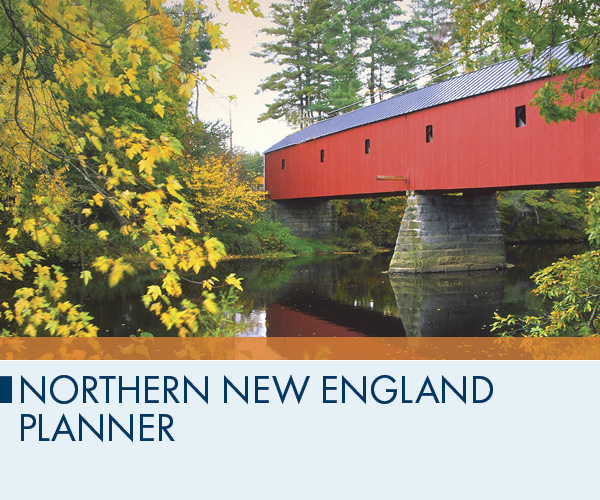
When to Go
Northern New England is a largely year-round destination, with winter popular with skiers, summer a draw for families and beach lovers, and fall a delight to those who love the bursts of autumnal color. Spring can also be a great time, with sugar shacks transforming maple sap into all sorts of tasty things and lilacs scenting the air. But, take note that youll probably want to avoid rural areas during mud season (April) and black-fly season (mid-May to mid-June).
Getting Here
Most travelers visiting Northern New England head for a major gateway, such as Boston or Manchester, New Hampshire, and then rent a car to explore the region. The Northern New England states form a fairly compact region, with few important destinations more than six hours apart by car.
Air Travel: Bostons Logan Airport is one of the nations most important domestic and international airports, with direct flights arriving from all over North America and across the globe. New Englands other major airports receive few international flights (mostly from Canada) but do offer a wide range of direct domestic flights to East Coast and Midwest destinations, and to a lesser extent to the western United States. Times from U.S. destinations are similar, if slightly shorter, to Albany and Hartford, assuming you can find direct flights.
Airports: The main gateway to Northern New England is Bostons Logan International Airport (BOS), the regions largest. Manchester Boston Regional Airport (MHT), about an hour north of Boston in New Hampshire, is another major airport. Additional Northern New England airports served by major carriers include Portland International Jetport (PWM) in Maine and Burlington International Airport (BTV) in Vermont. Other airports are in Albany, New York (ALB, near Vermont), and Bangor, Maine (BGR).
Train Travel: Amtrak offers frequent daily service along its Northeast Corridor route from Washington, Philadelphia, and New York to Boston. Amtraks high-speed Acela trains link Boston and Washington, with a stop at Penn Station in New York and other communities along the way. The Downeaster connects Boston with Portland, Maine, with stops in coastal New Hampshire.
Other Amtrak services include the Vermonter between Washington, D.C., and St. Albans, Vermont, and the Ethan Allen Express between New York and Rutland, Vermont. These trains run on a daily basis. To avoid last-minute confusion, allow 15 to 30 minutes to make train connections.
Getting Around
Car Travel: Northern New England is best explored by car. Areas in the interior are largely without heavy traffic and congestion, and parking is consistently easy to find, even in cities. Coastal New England is considerably more congested, and parking can be hard to find in resort towns along the coast. Still, a car is typically the best way to get around even on the coast (though you may want to park it at your hotel and use it as little as possible, exploring on foot, on a bike, or by local transit and cabs once you arrive). In the interior, public transportation options are more limited and a car is almost necessary. Morning and evening rush-hour traffic isnt usually much of a problem, except in larger cities and along the coast. Note that Interstate 95 is a toll highway throughout Northern New England. If you rent a car at Logan International Airport, allow plenty of time to return itas much as 60 minutes to be comfortable.
Next page

